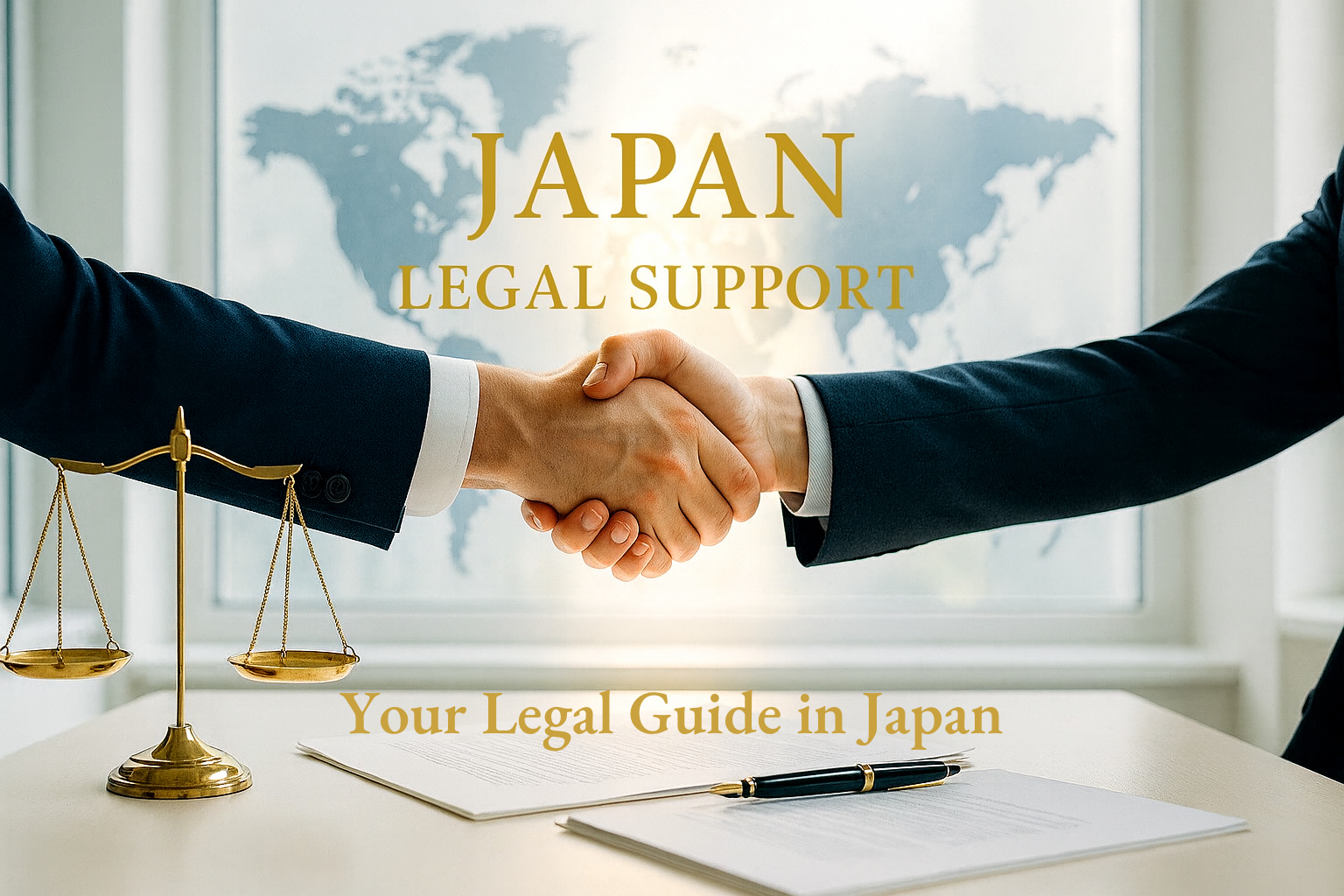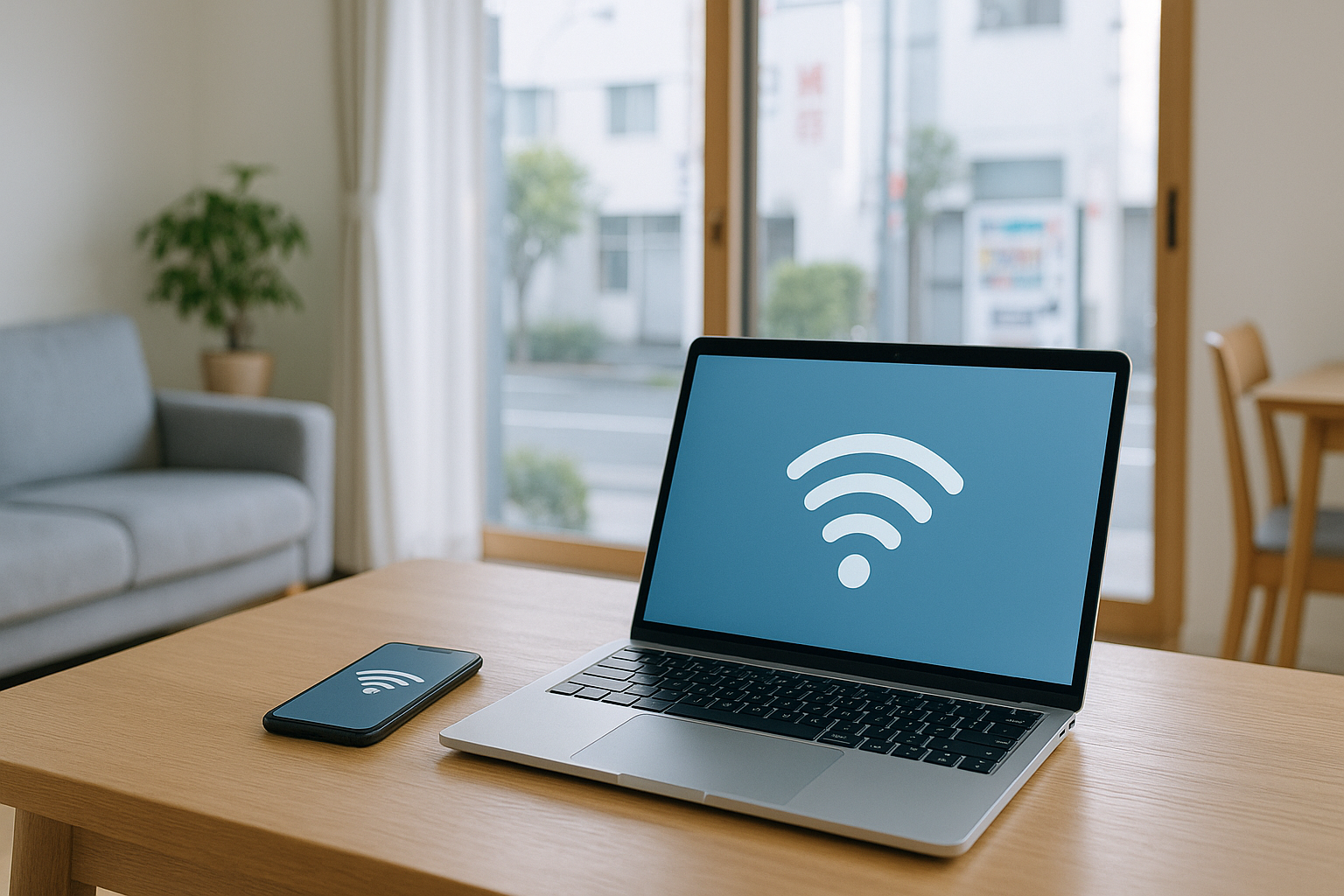- Introduction
- First, choose based on your stay
- Option A: Pocket Wi-Fi (Most practical for foreigners)
- Option B: Data SIM / eSIM (Use your phone as a hotspot)
- Option C: Fiber Internet (光回線 / Hikari Kaisen)
- What to Bring (Checklist)
- Step-by-Step: How to Apply
- Typical Costs
- Common Mistakes (to Avoid)
- After Setup: What will you do?
- Quick Recommendations
- Conclusion
Introduction
Stable internet is essential in Japan—for work, study, streaming, and even daily tasks like online banking or delivery updates. But for foreigners, the questions often start with: Can I even sign a contract? Will English support be available? Do I need installation? What if I leave early?
This guide explains the realistic options for foreigners, what documents to prepare, how to sign up, and common mistakes to avoid—so you can get connected smoothly.
First, choose based on your stay
- Short-term (up to 3 months): Airport rental Pocket Wi-Fi or prepaid SIM/eSIM
- Mid-term (3–12 months): Monthly Pocket Wi-Fi or large-data SIM/eSIM (with tethering). But if your apartment already has fiber internet installed, that will usually be the better option.
- Long-term (1+ year): Most apartments already have fiber internet installed—just sign a contract. Only in cases like buying a house, staying 5+ years, or living in an older property without fiber is new installation recommended.
💡 Quickest way: Pocket Wi-Fi or data SIM—no installation, same-day use.
Option A: Pocket Wi-Fi (Most practical for foreigners)
What is it? A portable router using mobile networks to create Wi-Fi for multiple devices.
Best for: New arrivals, students, travelers, and anyone needing same-day access.
Pros
- No installation; works instantly
- Multiple devices connect at once
- Airport, hotel, or home delivery available
Cons
- “Unlimited” plans often have fair-use limits (e.g., 3–10GB per day, or 100–200GB/month before throttling)
- Battery-powered (8–12h), needs charging
- Rental contracts may charge late/return fees
Option B: Data SIM / eSIM (Use your phone as a hotspot)
What is it? SIM or eSIM for your smartphone. You can tether your laptop or tablet.
Best for: People who prefer one device, minimal setup, and cheaper monthly costs.
Key points
- eSIM = embedded SIM (electronic SIM): activated by QR code, no physical card
- Device must be unlocked and support Japanese bands (most recent iPhones/Androids do)
- Large-data plans (20–30GB) cover most needs if tethering carefully
Cons
- Some plans block tethering—check first
- Tethering drains battery quickly
- Many providers require credit card payment
Option C: Fiber Internet (光回線 / Hikari Kaisen)
Best for: Long-term residents who need stable, fast internet for remote work, streaming, or gaming.
Facts
- In most apartments, fiber internet lines are already installed. You usually just need to sign a contract and connect a router—no construction required.
- In houses or older buildings, installation may still be required and can take several weeks.
- Typical cost: ¥4,000–6,000/month. Initial fees may apply but are often waived by promotions.
- “Free internet” included in some apartments is convenient but often slow at night because it is shared.
💡 Check with your landlord or agency first—if the line is already there, setup can be quick and easy.
What to Bring (Checklist)
- Residence Card (在留カード)
- Resident Record (住民票 / Juminhyo) — sometimes needed for address confirmation
- Payment method: Japanese credit card (recommended), or sometimes bank account auto-debit
- Passport (often requested for rentals)
- For fiber internet: landlord approval for installation (if new construction is recommended)
👉 Related: How to Open a Bank Account in Japan: A Complete Guide↗
👉 Related: How to Register Your Address in Japan: A Complete Guide↗
👉 Related: How to Get a Mobile Phone in Japan: A Complete Guide↗
Step-by-Step: How to Apply
A. Short-term (need internet today)
- Rent Pocket Wi-Fi online → pick up at airport/hotel → connect instantly
B. Mid-term (3–12 months)
- Apply for monthly Pocket Wi-Fi or data SIM/eSIM
- Upload Residence Card, set up payment
- Device/QR code delivered → activate → test speed
- But if your apartment already has fiber internet installed, signing a contract and using that will usually be the better option.
C. Long-term (1+ year)
- Ask landlord/agency if fiber internet is already installed in your apartment
- If yes, sign a contract and connect router → ready in days
- If not, book installation (recommended only for houses/older properties) and use Pocket Wi-Fi in the meantime
Typical Costs
- Pocket Wi-Fi (rental): ¥700–1,200/day, or ¥4,000–6,000/month
- Data SIM/eSIM (20–30GB): ¥2,000–4,000/month (sometimes less with discount providers)
- Fiber internet: ¥4,000–6,000/month + installation fee (often discounted)
💡 “Unlimited” almost always has restrictions—watch for throttling conditions.
Common Mistakes (to Avoid)
- Believing “unlimited” really means unlimited → expect throttling after heavy usage
- Forgetting about the language barrier → many providers don’t offer English support. Some providers do (e.g., Sakura Mobile, GTN Mobile).
- Overlooking penalties → fiber cancellation fees, rental late/return charges
- Not preparing for delays → fiber installation (if needed) can take weeks
- Relying on free apartment Wi-Fi → often unstable and slow at night
- Using public Wi-Fi for sensitive tasks → unsafe without a VPN
After Setup: What will you do?
- Check your speed in different spots/times (window side, 2.4GHz vs. 5GHz)
- Monitor your data use if on Pocket Wi-Fi/SIM (set alerts)
- Keep your contract details (return dates, cancellation rules)
- Have a backup option—tethering from your phone for important meetings or exams
Quick Recommendations
- Up to 3 months: Airport rental Pocket Wi-Fi
- 3–12 months: Monthly Pocket Wi-Fi or large-data SIM/eSIM. But if your apartment already has fiber internet installed, using that is usually the better option.
- 1+ year: Fiber internet if already installed; new installation only recommended for houses or older properties
Conclusion
For most foreigners, the fastest and most realistic option is Pocket Wi-Fi or data SIM. Fiber internet is often available in apartments, and in many cases no construction is required—just a contract and a router. Bring your Residence Card, Resident Record, and a valid payment method, check the fine print on “unlimited” plans, and confirm cancellation rules—so you’ll stay connected without surprises.
👉 Related: [Living and Working in Japan: First Steps]
Note: This article is written for foreigners living in Japan or planning to move to Japan. Conditions and requirements may vary depending on individual circumstances.




